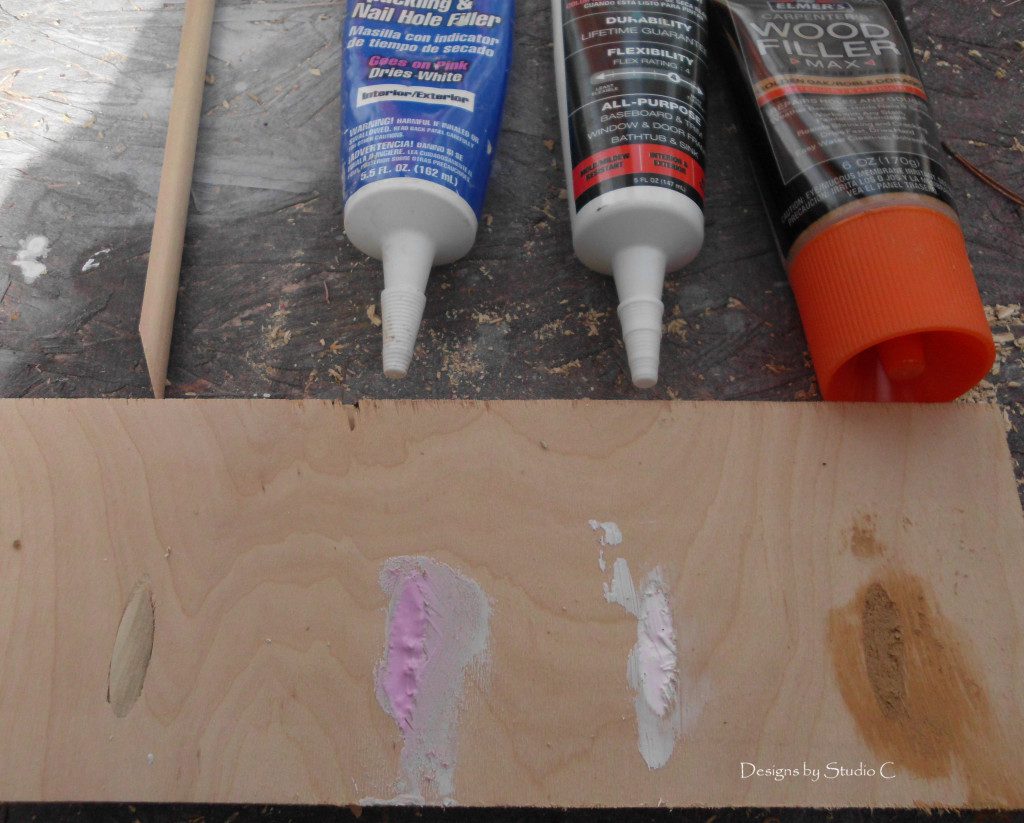A Guide to Filling Pocket Holes
What Works and What Doesn’t With Stain
The Kreg jig is an indispensable tool in any DIYer’s toolbox. This handy tool enables its user to easily join two pieces of material together by drilling pocket holes and inserting screws. The pocket hole method gives strong, secure connections every time, allowing for reliable woodworking projects.
If you’re trying to fill pocket holes in a woodworking project, there are several options available to you. You can use a dowel and trim it flush, use wood filler, Dry-Dex (<– affiliate link!) – a kind of joint compound, or paintable caulk. Each of these will work well when painting the finished piece but each may produce different results when using stain. To find out how each option works with staining, it’s best to experiment first.
When it comes to filling pocket holes, there are a few different types of fillers you can use to get the job done. I tried different ones to see what works best and let them dry before continuing.

After I finished staining the board, I also stained each of the four pocket holes to see which filler would look best.

Filling pocket holes is easier than ever with the array of products available. Dowels, dry-dex spackling compound, paintable caulk and wood filler each offer advantages and pitfalls depending on staining properties. For example, the Dowel takes stain well, whereas Dry-Dex has a better consistency for filling holes but does not take in stain very well. Paintable caulk does not take stain at all and may need to be covered with paint or varnish instead, while quality wood filler absorbs stains quite nicely. (I already knew the caulk wouldn’t take it but I thought I’d try, right?)
So I guess the dowel will be the winner… Have questions about the guide to filling pocket holes? Leave a comment below!
